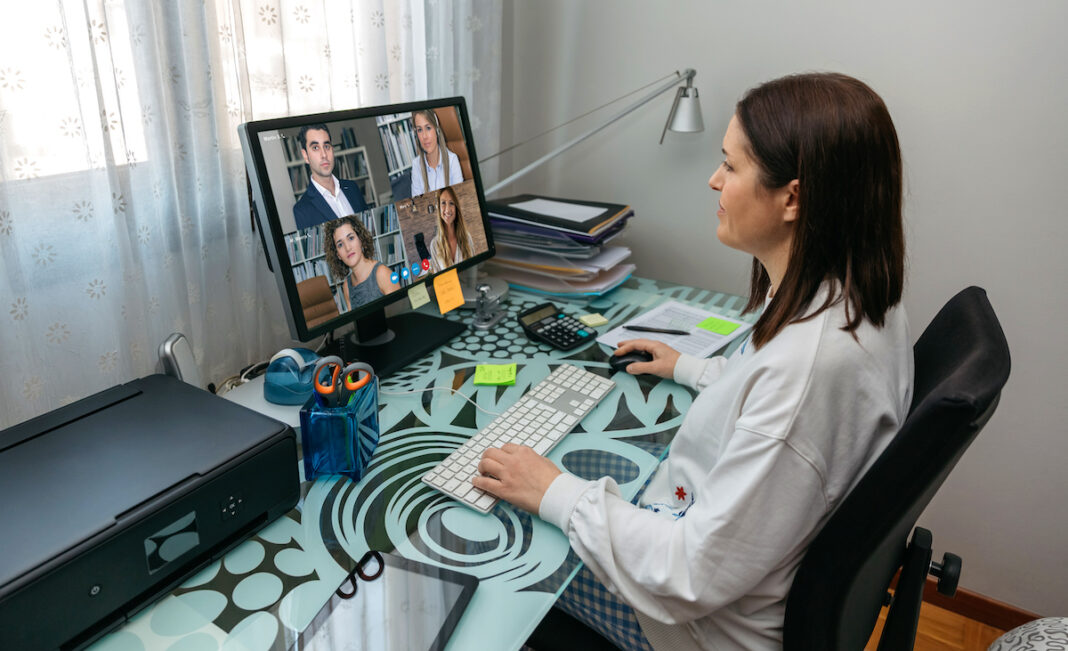While some people thrive in perfect isolation, long-term invention is more often the outcome of close collaborative efforts. Working from home is a more common occurrence in the workplace. There’s a growing recognition that, while productivity has increased, the process of creativity requires reconsideration.
Innovation vs. Productivity
Executives report that employees have been highly productive. 82% say that productivity levels have remained constant or increased as workers have switched to remote work. More than half believe it is an effective method to keep top talent.
Simultaneously, as organizations’ employees dispersed due to Covid-19, the spirit of creativity has plummeted. In a previous survey, 56% of CEOs thought their company were innovative in terms of products and services. This year, the number has reduced to 40%.
First, it must be stated that regular in-person professional contacts might be suffocating and not always supercharging innovative spirits.
What can you do to get your creative juices going
Getting everyone in the same room creates a certain social order. Attendees must stay in their seats and respect the boundaries set by the meeting’s leader. It would carry enough tension to be disruptive if someone got up, wandered about, or left the group outright. Participants in virtual meetings, on the other hand, can turn off their camera for a time. They can pretty much do anything they want in support of their creative flow. They can write on their whiteboard, perform push-ups and then turn it back on when they finish. A savvy manager will give participants the option to turn off cameras to solve a problem on their own.

Open channels of communication
There are ways to mimic the “serendipity” that fosters workplace innovation. You can no longer readily overhear office chatter or have water cooler discussions. The most important place to start is with open communication. Increase conditions for spontaneity that tailor to the circumstances. Allow for open communication. There must be no private Slack messages on work-related topics. This is so that others can notice and respond. Encourage peer evaluations and collaborative sessions to keep people from getting lost for too long. Communication is crucial in this situation.”
1. There are a lot of great online tools to choose from
Connection, collaboration, and feedback are three critical components of the finest virtual working environments. By maintaining these elements in place, you will increase participant engagement while keeping the group on track.
A solution like Klaxoon provides these elements, which are crucial for remote meetings.
And even same time, you can use a mix of tools. Each tool is related to a specific activity but complements the others perfectly. For example, to establish a connection, you can use a corporate phone system or conferencing software. Then combine it with a real-time collaboration platform to work on designs. You can utilize a variety of methods to collect feedback – polls, chats, and instant messaging. In this instance, you can generate an infinite number of combinations and tailor them to your specific meeting requirements.
2. Know your resources and have a backup plan
You might be able to turn on the video camera and transmit a code for people to input when they join. Knowing your software and hardware can help you use your tools more efficiently and solve problems faster.
Make it a habit to call or go online at least 5 minutes ahead of time. This is so you can set up the facility ahead of time or switch to plan B. Rehearsals for video recording should come first, as this can cause the computer’s operation memory to become overburdened.
3. Create a common area
What is the most significant advantage of having a face-to-face meeting? It is face-to-face communication that occurs as a result of sharing a physical location. A shared area, on the other hand, is not the same as a meeting room. Included are: Shared flip charts, discussions, shared screens, and a shared online whiteboard. A mixture of diverse shared areas positively influences the presence of distant employees in a meeting.
To keep staff engaged, use a mixture of Slack and Skype for all remote meetings. They may observe product development while adding notes and updates. You can use Gitlab project management boards in real-time using Skype’s screen-share feature.
4. Carefully plan the schedule and distribute it ahead of time
It takes time and effort to get everyone together for a remote meeting, so don’t waste it. Please make a list of particular things to cover and stick to it. It is preferable to communicate the plan with individuals who will be attending before so that everyone can prepare.
Before the meeting, sends out the plan and the meeting’s goals and asks participants to read it and remark if they have any feedback or comments.
5. Inviting the appropriate individuals
Due to the capabilities of technology and everyone’s contribution to the conversation, virtual working with many participants is tough. Begin by practicing with smaller groups of individuals and gradually expanding the number as you experience remote management. 1-10 people is an excellent place to start. This is because there is less expectation to participate in a conversation with many people on the call.
It would be fantastic if everyone just did their email and didn’t say anything. But, more often than not, they become dissatisfied as time passes, and they accomplish nothing helpful with it.
6. Create a set of regulations
Set the rules and distribute them to attendees before the meeting. It can be a brainstorming session, a project update and approval session, or any other type of recurrent meeting.
Meetings that are out of hand don’t help your team be more productive or creative. They usually result in confusion, with everyone speaking at the same time. This is why you must establish “road rules” that limit each person’s speaking time. This helps to avoids anyone from dominating the conversation.
Final Thoughts
So, if you’re in charge of a remote meeting, you have to cope with internal rejection and dread of being less productive. Managers favor face-to-face meetings over remote meetings because the former can be more effective. In general, this is correct. However, there is always the option of adapting and improving the process and consequence of remote collaboration.






